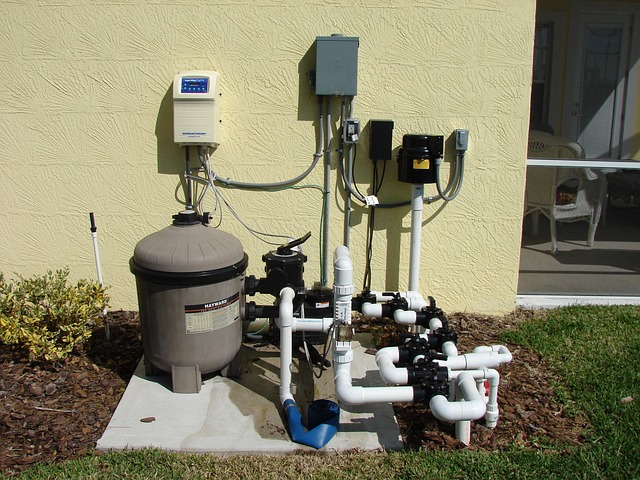Ultimate Guide to Water Tank Solutions: Essential Storage for Homes and Industry
Water is one of the most vital resources, and the growing need for reliable water storage solutions has made water tanks a necessity in both residential and industrial settings. From rainwater harvesting to emergency storage, water tanks cater to a diverse array of requirements. This article delves deep into the world of water tank solutions, focusing on residential water storage, industrial water tanks, portable water storage, rainwater harvesting tanks, and above ground water tanks.

Water storage solutions have become increasingly important as communities face water scarcity challenges and seek greater self-sufficiency. Modern storage systems range from simple residential containers to sophisticated industrial installations, each designed to meet specific capacity and quality requirements.
Water Tank Essentials: Understanding Basic Components
Water storage tanks consist of several key elements that determine their effectiveness and longevity. The tank material significantly impacts durability, with options including polyethylene, fiberglass, steel, and concrete. Each material offers distinct advantages: polyethylene tanks resist corrosion and remain lightweight, while steel tanks provide exceptional strength for large-capacity applications.
Proper sizing calculations consider daily water usage, emergency reserve requirements, and available installation space. Standard residential tanks range from 50 to 5,000 gallons, while commercial systems often exceed 10,000 gallons. Installation requirements include level foundations, adequate ventilation, and compliance with local building codes.
Residential Storage Explained: Home Water Solutions
Homeowners increasingly invest in water storage systems for emergency preparedness and utility cost reduction. Residential tanks typically serve multiple purposes: backup water supply during outages, irrigation storage, and pressure system support. Underground cisterns offer space-saving benefits but require professional installation and waterproofing.
Above-ground residential tanks provide easier maintenance access and lower installation costs. Popular configurations include vertical cylindrical tanks for smaller properties and horizontal tanks where height restrictions apply. Many residential systems incorporate filtration components to ensure water quality for potable use.
Industrial Tank Uses: Commercial and Manufacturing Applications
Industrial water storage serves diverse purposes across manufacturing, agriculture, and commercial sectors. Process water storage ensures consistent supply for manufacturing operations, while fire suppression systems require dedicated tank capacity meeting specific flow rate standards. Food processing facilities utilize specialized tanks with sanitary features and temperature control capabilities.
Large-scale industrial installations often feature multiple interconnected tanks with automated monitoring systems. These configurations provide redundancy and allow for maintenance without service interruption. Industrial tanks frequently incorporate advanced materials like stainless steel or specialized coatings to handle specific chemical requirements.
Portable Water Solutions: Flexible Storage Options
Portable water tanks offer flexibility for temporary applications, remote locations, and emergency response situations. These systems range from small collapsible containers to large trailer-mounted units capable of holding thousands of gallons. Construction sites, outdoor events, and disaster relief operations commonly utilize portable storage solutions.
Modern portable tanks feature durable materials resistant to UV degradation and temperature extremes. Many include integrated pumping systems and distribution connections for immediate deployment. Transportation considerations include weight distribution, securing mechanisms, and road safety compliance for mobile applications.
Rainwater Harvesting Systems: Sustainable Collection Methods
Rainwater harvesting represents an environmentally conscious approach to water storage, reducing reliance on municipal supplies while managing stormwater runoff. These systems capture precipitation from roof surfaces, directing water through gutters and downspouts into storage tanks. Proper filtration removes debris and contaminants before storage.
Harvesting system design considers roof area, local precipitation patterns, and intended water uses. First-flush diverters improve water quality by redirecting initial rainfall that carries accumulated roof debris. Advanced systems incorporate automated controls for overflow management and distribution to irrigation zones.
| Tank Type | Capacity Range | Material Options | Cost Estimation |
|---|---|---|---|
| Residential Above-Ground | 50-5,000 gallons | Polyethylene, Fiberglass | $200-$3,000 |
| Underground Cistern | 1,000-10,000 gallons | Concrete, Fiberglass | $2,000-$15,000 |
| Industrial Storage | 5,000-50,000+ gallons | Steel, Stainless Steel | $5,000-$50,000+ |
| Portable Units | 100-5,000 gallons | Polyethylene, Flexible Materials | $300-$5,000 |
| Rainwater Harvesting | 500-10,000 gallons | Various Materials | $1,000-$8,000 |
Prices, rates, or cost estimates mentioned in this article are based on the latest available information but may change over time. Independent research is advised before making financial decisions.
Proper maintenance ensures water storage system longevity and performance. Regular inspections identify potential issues before they compromise system integrity. Cleaning schedules vary by application, with potable water systems requiring more frequent attention than irrigation-only storage. Professional installation and periodic servicing help maximize investment value while ensuring safe, reliable operation.
Water storage solutions continue evolving with technological advances and changing environmental conditions. Smart monitoring systems now provide remote tank level monitoring and automated alerts for maintenance needs. These innovations help property owners optimize their water management strategies while reducing operational complexity and costs.




